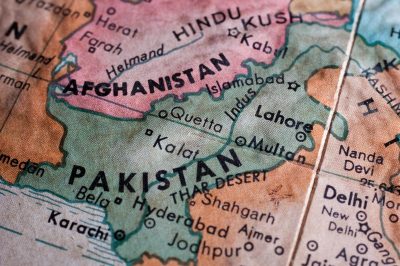Pakistan, a country with breathtaking beauty and various landscapes, is at a critical crossroads in the face of climate change. With its lively cities, beautiful valleys, and vast arid terrain, Pakistan’s quest to achieve the Sustainable Development Goals (SDGs) on climate change presents both a difficult task and a unique opportunity. The article will look at how Pakistan might use its potential to build a sustainable and resilient future while also addressing the challenges that lie ahead.
Climate Change Conundrum
Despite little contribution to global greenhouse gas emissions, Pakistan is one of the most susceptible countries to climate change. Its vulnerability ranking (37 out of 191) is driven by its high levels of multifaceted poverty, exposure to disasters such as flooding, earthquakes, tropical cyclones, drought, and social vulnerability.
Pakistan has continuously rated among the top ten vulnerable countries on the Climate Risk Index, with 10,000 deaths due to climate-related disasters and financial losses of over $4 billion. These environmental concerns endanger Pakistan’s natural beauty and pose substantial hazards to its agriculture-dependent economy and the well-being of its rapidly growing population.
Transition to Green Energy
The potential for the green energy revolution is vital to Pakistan’s sustainable development. Pakistan has already established a target to cut its greenhouse gas emissions by 50% by 2030, and clean energy growth, particularly renewable energy, will play a significant role in meeting this objective.
Pakistan is blessed with rich renewable resources, including solar, wind, and hydropower. The country has vast solar resources, with an average of nine and a half hours of sunlight daily.
The Pakistani government has actively embarked on enhancing its energy infrastructure. It plans to increase its hydropower capacity of 9,000 MW by adding 13,000 MW by 2030.
Furthermore, nuclear power, which presently accounts for 10% of Pakistan’s domestic energy mix, is being considered for expansion, with a possible increase to more than 50% by the same year.
These efforts demonstrate Pakistan’s commitment to diversifying and improving its energy resources. Despite its low contribution to global greenhouse emissions, the country’s vulnerability to climate change emphasizes the need for sustainable energy alternatives.
Transitioning to renewable energy sources like solar, wind, and hydropower can help reduce Pakistan’s carbon footprint and address chronic energy shortages. Still, it requires government investment and the creation of a supportive policy environment that encourages private sector involvement and innovation.
Sustainable Agriculture: The Key to Resilience
Agriculture is both a resource and a liability in Pakistan’s fight against climate change. Pakistani farmers confront issues such as inadequate resources, climate change, poor adoption of new techniques, and post-harvest losses. Climate change impacts them through variable weather patterns, water shortages, decreased crop yield, and alterations in pest and disease patterns, resulting in crop failures and economic loss.
Water-efficient irrigation, organic farming, and crop diversity may minimize environmental impact while increasing production and climatic resilience. Investments in research, infrastructure, and market connections are critical for creating climate-resilient agriculture and enhancing farmer livelihoods.
Also Read: Calming the Storm through Diplomatic Solutions: Iran-Pakistan Case Study
The Development of Cities for a Sustainable Future
Urban areas of Pakistan, such as Islamabad, Lahore, and Karachi, are growing. Although this urbanization is a sign of economic growth, it also brings challenges with waste management, pollution, and the unsustainable use of resources. Inadequate green areas and poor garbage management are some of the major difficulties suffered by these metropolitan centers.
However, there is a rising awareness in the country of the need for sustainable urban development and green planning efforts to address these difficulties. Efforts to transform cities are underway, such as developing green infrastructure indicators to create resilient urban settlements in Pakistan’s northwest regions to create climate-resilient cities.
Pakistan should address the environmental implications of growing urbanization and promote a more sustainable city future by boosting transportation, green spaces, and sustainable real estate practices.
Addressing Political and Financial Obstacles
The transition of Pakistan to a green economy and sustainable development is hindered by factors such as inadequate resources, economic restraints, and political instability. These hurdles have resulted in a lack of political commitment, poor implementation of environmental legislation and regulations, and insufficient infrastructure and policies for green growth.
Furthermore, Due to political obstacles, allocating resources for sustainable projects sometimes conflicts with urgent political and economic considerations, making prioritizing climate change mitigation and adaptation solutions difficult.
Efforts are underway to address these obstacles in the economy, with the State Bank of Pakistan playing a critical role in promoting sustainable financing. This is accomplished by using a variety of refinancing schemes tailored expressly to encourage projects that use renewable energy.
To ensure Pakistan’s sustainable development, efforts to encourage sustainable finance, green industry, and creative financing are critical. Similarly, improved intergovernmental cooperation, bipartisan support for climate measures, and public participation are crucial. Strengthening institutions contributes to this balanced development strategy, prioritizing environmental and economic sustainability.
Local and global efforts for a sustainable Pakistan
Pakistan must empower local communities and engage in international collaboration to achieve sustainability. The country needs both local actions and international cooperation to ensure a sustainable future. To encourage environmental stewardship and harness global resources, it must foster grassroots movements, create public awareness, and leverage global collaborations for technological transfer and financial assistance.
In Conclusion, sustainable development and climate change mitigation put Pakistan at a critical juncture. The nation’s dedication to renewable energy, sustainable agriculture, urban innovation, community empowerment, and overcoming financial and political obstacles demonstrates its potential for tremendous improvement.
Furthermore, international engagement remains crucial to Pakistan’s policy, emphasizing the critical necessity for joint action. As Pakistan navigates this route, today’s actions are vital to leaving a legacy of sustainability and resilience for future generations, making now the moment for bold action towards a greener Pakistan.
***Author Shameen Shafiq is an MPhil Scholar in Strategic Studies at the National Defense University, Islamabad








